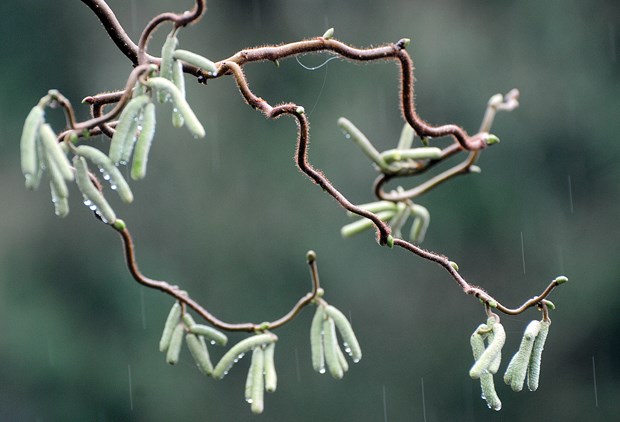Each year as I finish putting the garden to bed for winter, I look for easy-to-cut greens, and interesting stems and berries to use as Christmas decoration.
Most residential gardens can provide a range of fresh cut greens, interesting stems, seed heads and cones - sort of like a florist in your own backyard. The diversity of decoration depends on the complexity of the garden's plant palette. Given that the North Shore is heavily treed with cedar, fir, hemlock, spruce and pine, many gardens likely have those basic plants for cut greens. But beyond the basics, there's a realm of plants that can offer interest and beauty for decoration that cannot be bought at the store. Here are some suggested plants for Christmas decoration. Broadleaved plants are the easiest place to start looking for Christmas cuts because those plants are widely planted in residential gardens. There are rhododendrons, lily of the valley bush, skimmia, boxwood ivy and others to use for making wreaths, centrepieces or winter containers.
For something less common try Portuguese laurel (Prunus lusitanica) with its green, glossy, pointed leaves with reddish-purple petioles (leaf stem) for contrast. Portuguese laurels grown as hedges may have less to offer for decorating cuts. However plants grown as large shrubs or trees will often have red to dark purple berries on their stems to complement the leaves for decoration.
Broadleaved plants, like variegated holly, are typical places to start but they pale in comparison to the beauty of Magnolia grandiflora.
Also known as the southern magnolia, this tree provides large glossy leaves that can be used standalone or as foil for other stems and berries in the arrangement. If you are lucky enough to have a magnolia with indumentum on the bottom sides of the leaves you will be rewarded with glossy bright green leaves on top with rich dark to light brown felt or hairs on the bottom.
Magnolias also produce large globular fruits that range in colour from pink to red to burgundy. The seeds from the colourful fruits are gradually exposed and range in colour from pink to magenta. The brown indumented leaves combined with the bright pink fruits make a gorgeous table display or vase at the front door.
Broadleaved plants need bright companions to brighten up the display and nothing is brighter than the berries of winter. Callicarpa bodinieri (a.k.a. the beauty berry) is a must have for seasonal decoration. The stunning violet coloured berries develop in late fall and are held in tight clusters on the shrub's branches. Be sure to combine those berries with an equally bright but contrasting colour of foliage to act as a foil and show off the berries.
The cut branches from Callicarpa can be big and difficult to place on a table setting but the berries are best enjoyed up close. So some cutting and creating of a suitable decoration is required with this plant. Cut carefully on beauty berry to avoid destroying the plant's structure and future fruit producing wood.
Roses also produce clustered and single rose hips in shades of orange, red, pink and burgundy. If you haven't pruned your roses for winter yet, check your climbing and shrub roses for rose hips to use for decoration. Even the common Meilland landscape rose and the wild shrub rose types will produce colourful rose hips in shades of red and orange. There's also the benefit of colourful frost toned thorns on the rose's stems to augment the display.
Along with foliage and fruit there are plenty of interesting plant stems to be cut from the garden. The common winged burning bush (Euonymus alatus) has interesting stems for display. As is the case for most stems used decoratively, one stem is not enough. Always use multiples in bundles, or randomly incorporated throughout the decoration to provide enough visual weight.
Interesting plant stems can be colourful or textural. For example, twisted willow (Salix matsudana) and the corkscrew hazel (Corylus avellana 'Contorta') both have curly or spirally arranged stems with a unique texture and shape. If you don't have those plants in your garden, you can find them at most florists and garden centres. If none of those plant stems are interesting enough, try spray painting them with any suitable Christmas colour to liven up the display.
Some final suggestions: When cutting natural decorations from the garden use clean, sharp pruning tools, prune judiciously and leave the plant with good form so next year's harvest will be just as bountiful. Remember that whatever you cut from the garden for Christmas decoration is a reflection of your personal taste - there is no right or wrong choice. Your plant choices are right for you and your guests will enjoy the colours of the season.
Todd Major is a journeyman horticulturist, garden designer and builder, teacher and organic advocate. [email protected]



